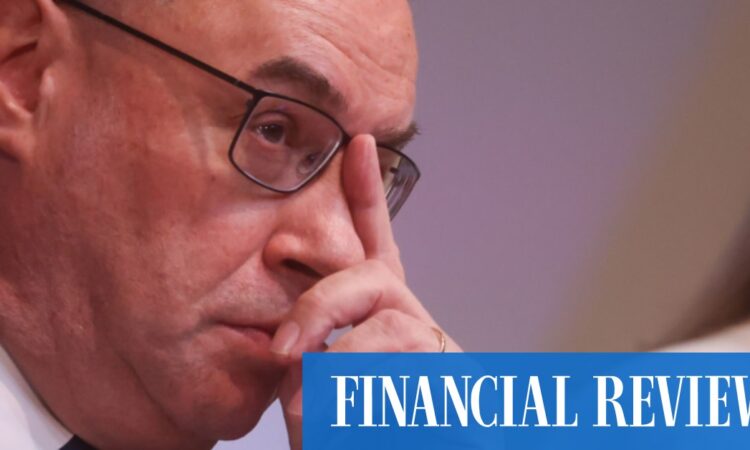
“Things are calmer than they were,” said Mr Ramsden. But “the pattern of previous financial crises that I’ve been involved in is the way things mushroom, and other things happen”.
Mr Bailey said markets were “trying to find points of weakness at the moment”.
“There are moves in markets to test out firms. I would not want to say in my estimation that those are based on identified weaknesses, more than testing out,” he told a Treasury Select Committee hearing on the HSBC purchase of SVB’s British subsidiary.
He said the markets were “in a different place” than 2007-08; “But we have to be very vigilant. … We are in a period of heightened, frankly, tension and alertness.”
Mr Bailey pushed back against MPs’ suggestions that the rapid increase in official interest rates — in a little over a year, the BoE’s benchmark has risen 11 consecutive times and more than 4 percentage points — had played a part in stressing the banking system.
“We’ve seen some evidence of some tightening of credit conditions, but we do not see a critical development in that respect. … We think that the banking system has ample capacity to lend, to support credit,” he said.
“Because we judge the UK banking system to be stable, safe and sound, the monetary policy committee was able to conclude that we did not have to, if you like, aim off monetary policy because of the stability of the financial system.”
Moral hazard
Mr Bailey also politely queried some of the actions taken by the Swiss and US regulators to stem the crisis.
He said he would not take issue with US decisions made in the heat of a banking meltdown. But there was a worry that market participants might assume there was now an implicit guarantee that banks would not be allowed to fail – creating so-called “moral hazard”.
“This is not a state of affairs that should be the norm, that all deposits are guaranteed,” Mr Bailey said.
After the initial rescue decisions were taken, “the question is how you work the system out … what’s the steady state going forward?”
He said the Swiss authorities’ decision to wipe out holders of Credit Suisse Additional Tier 1 (AT1) bonds ahead of equity holders was in keeping with the bond contracts, but the BoE would not take that approach.
“In any resolution, we would always abide by the creditor hierarchy, because that is a cardinal principle,” he said.
The BoE had discouraged AT1 bonds that sat below equity in the pecking order, instead telling banks to structure hybrid bonds so that the paper converted to equity.
Fast-moving crisis
Sam Wood, the head of Britain’s Prudential Regulation Authority and a deputy BoE governor, told MPs that the SVB-Credit Suisse crisis had involved some unique features.
In particular, his team had been struck by the speed at which depositors could pull their money out, and the speed with which news was travelling through social media, including via private messaging groups.
In the SVB case, another salient feature had been “the concentrated nature of the deposit base”.
“We’re going to have to have a look at all of that,” he said.
He also flagged that central banks globally would be considering whether they needed to adjust the rule requiring banks to hold one month’s worth of liquidity – known as the liquidity coverage ratio.
Mr Bailey said Credit Suisse’s collapse was “a rather institution-specific story about long-run issues in the institution”, and noted it was “probably the fastest passage from health to death since Barings” in 1995.





